









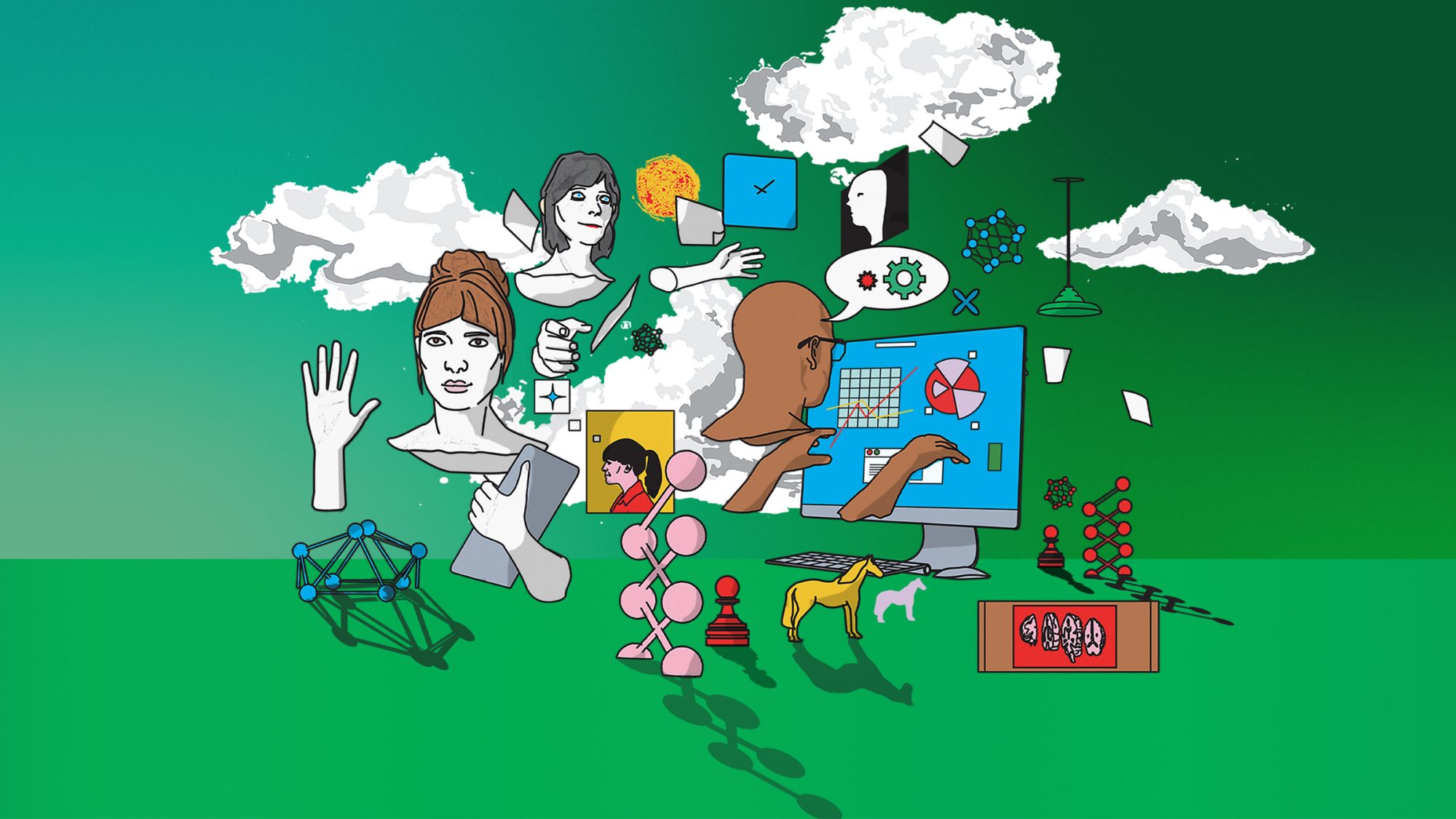 Illustration by Patrick Cullum @pat_geoff_ron
Illustration by Patrick Cullum @pat_geoff_ron Neurodiversity is the range of differences between people’s brain function and personality traits. Up to 20% of us are considered neurodivergent. The other 80% are known as neurotypical.
Within these groups, there’s a whole spectrum of unique needs to design for.
To design for neurodiversity, we first need to understand that behaviour is individual. We often say in workplace strategy that activity-based working (ABW) is outdated. ABW taught us that a single setting is not equally suited to all tasks. With neurodiversity, it’s essential to recognise that not every person performs that task in the same way.
Design for neurodiversity requires a more nuanced approach. Neurodivergent employees may struggle in a traditional workplace. With small adjustments that benefit everyone, you’ll be able to leverage their unique skills and create a more inclusive workplace environment. While these principles are embedded in our design process at M Moser, we’ve developed an Inclusive Design service to help clients who want to go beyond expectations.
Commenting on the release of Universal Music’s guide to Creative Differences, UK CEO, David Joseph, says “making your organisation ND-friendly is to the benefit of your entire workforce. Everyone should feel comfortable in bringing their whole selves to work.”
Most organisations can’t design for individual needs. However, by combining a spectrum of preferences with a range of spaces, we can still achieve the desired outcome— for every person to feel they can work effectively. Most importantly, this minimises the appearance of difference. It becomes about choice.
Consider these essentials when designing an office for neurodiversity:
Visually, a neurodiverse workspace looks similar to any other office. By breaking down the plan below into four distinct personas, we can understand how their needs come together.
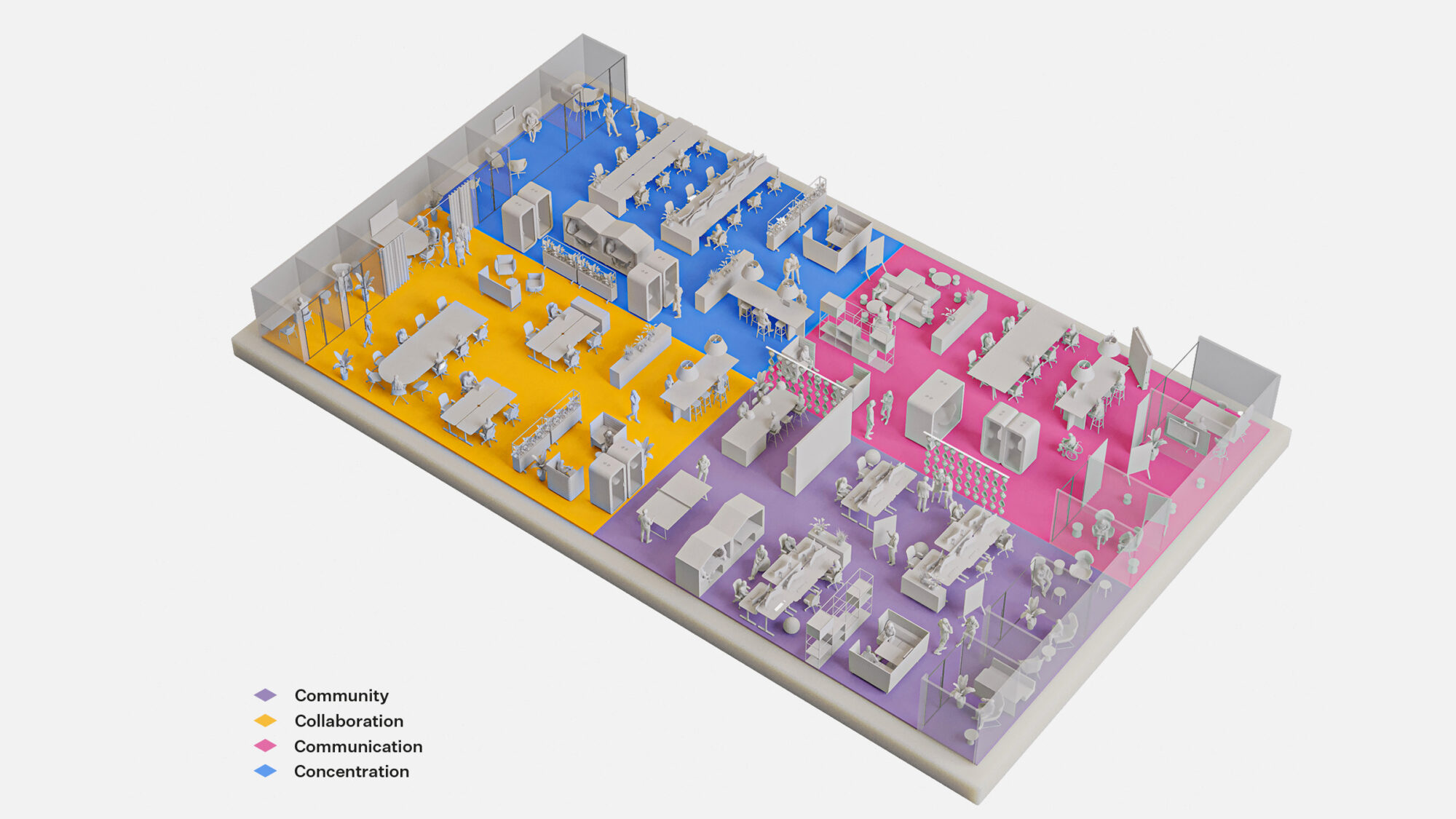
Spaces for neurodivergent employees combine distraction-free workspaces with stimulating community areas. Collaboration and meeting zones are typically more intimate, designed for smaller groups and one-on-one conversations.
Individual characteristics
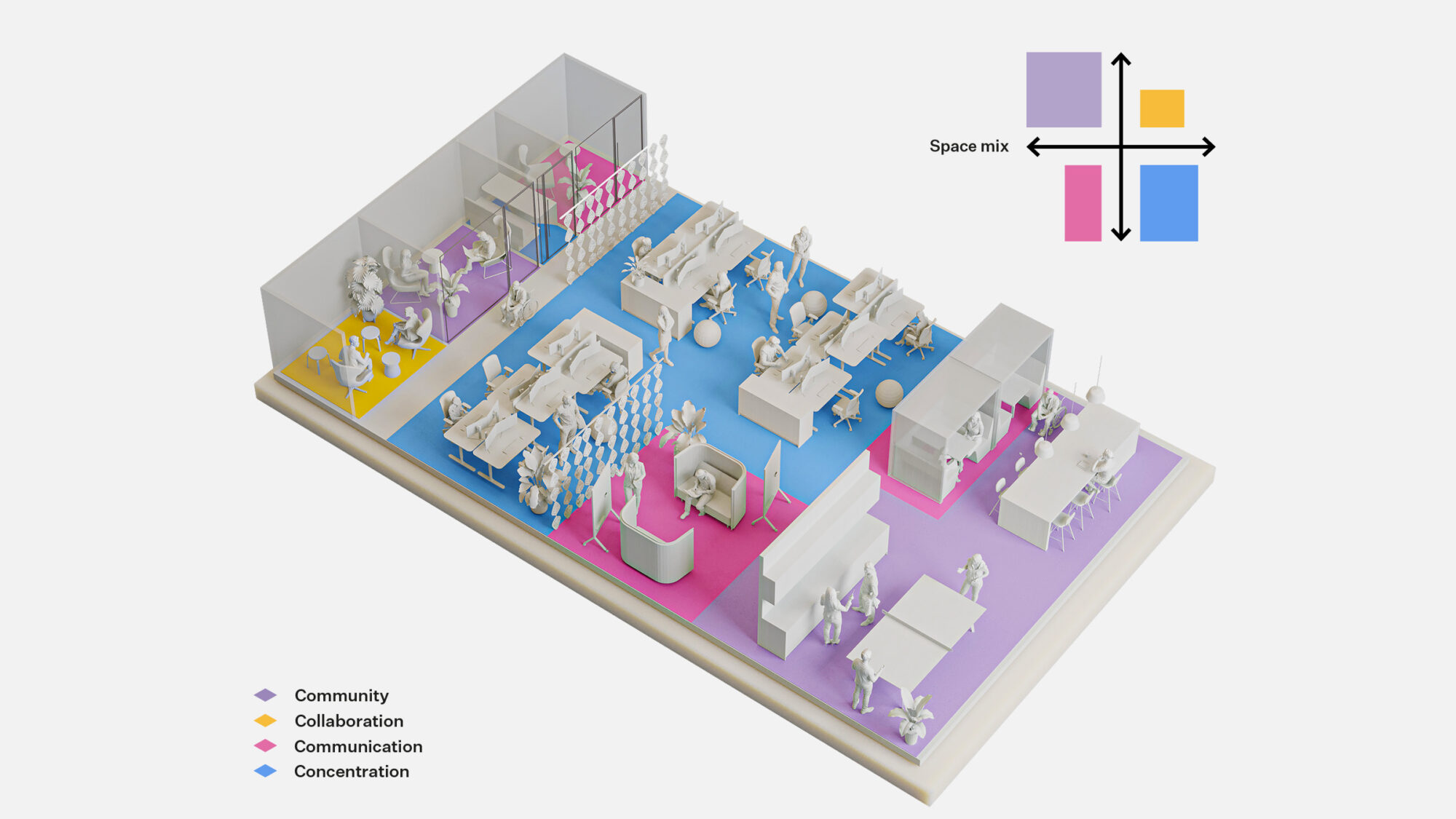
Similarly, the sensory sensitive group require more concentration and community spaces. Communication happens in a social setting where employees can choose to participate, rather than in large meetings.
Individual characteristics
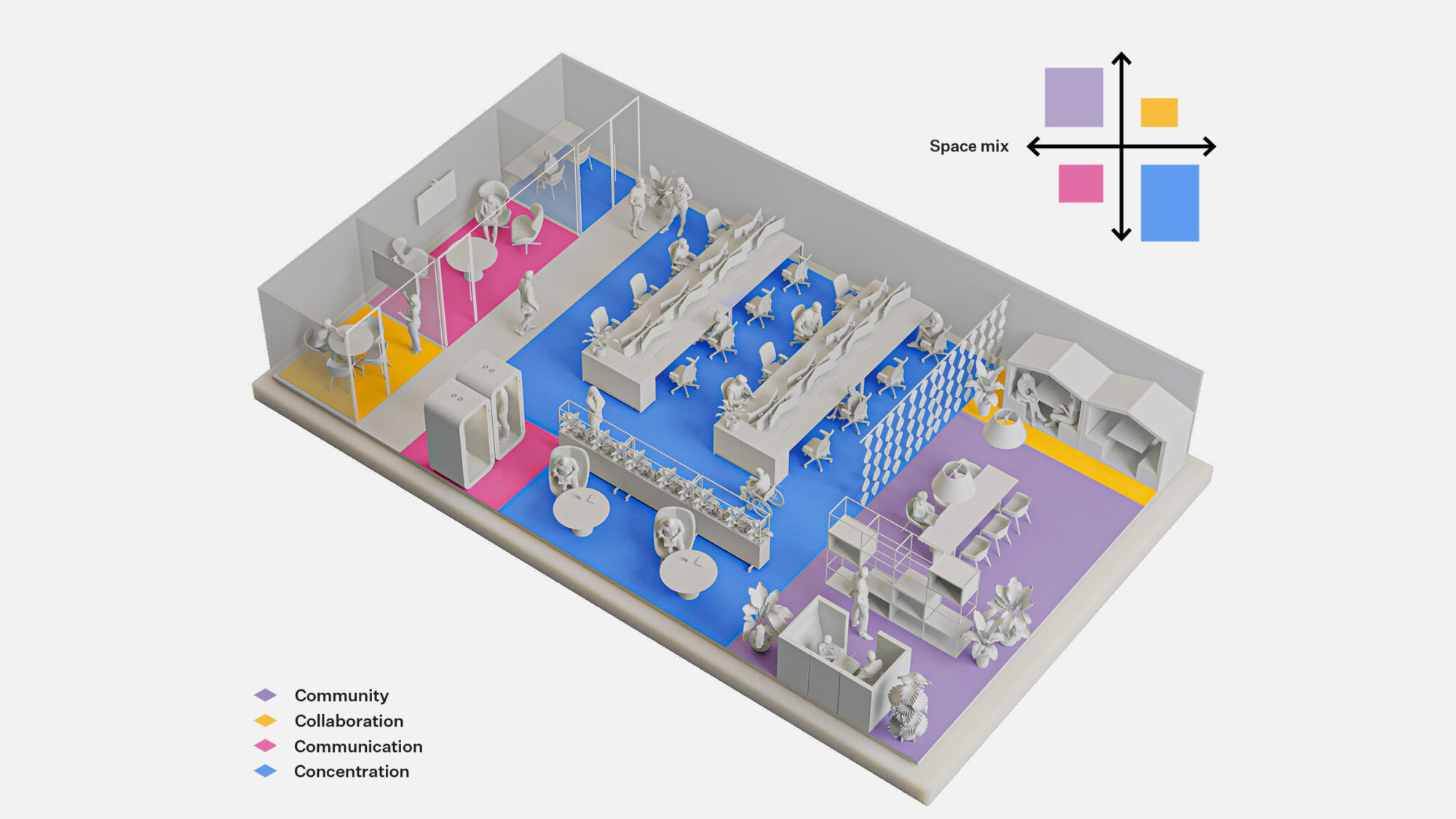
Neurotypical employees thrive in multi-purpose, open spaces. Collaboration is integrated within the working zone to provide opportunities for teamwork. Less privacy and fewer barriers are required.
Individual characteristics
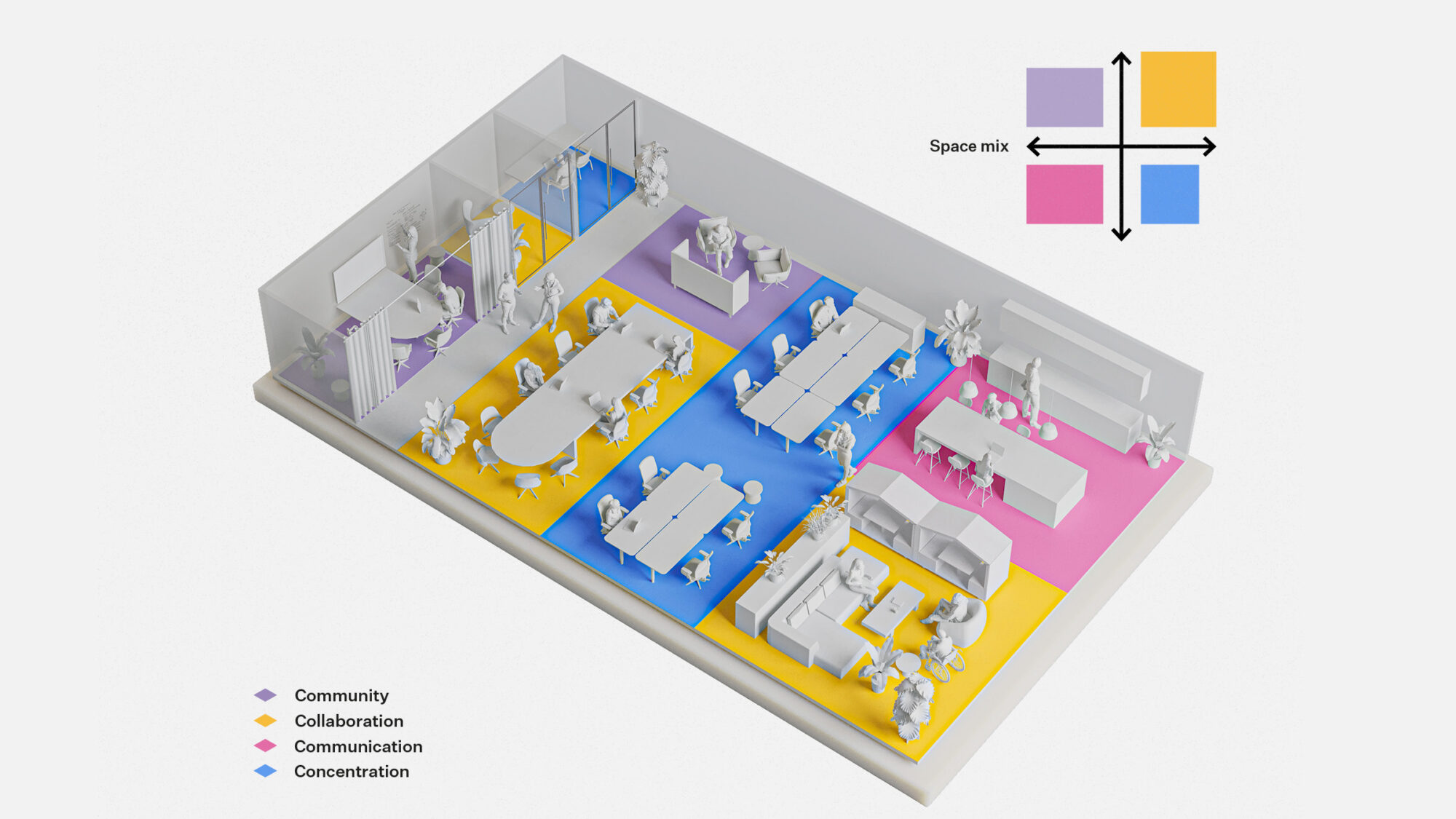
Sensory seeking individuals benefit from vibrant, open spaces for making connections and sharing ideas. The settings focus on a variety of communication styles, from individual calls team discussions.
Individual characteristics
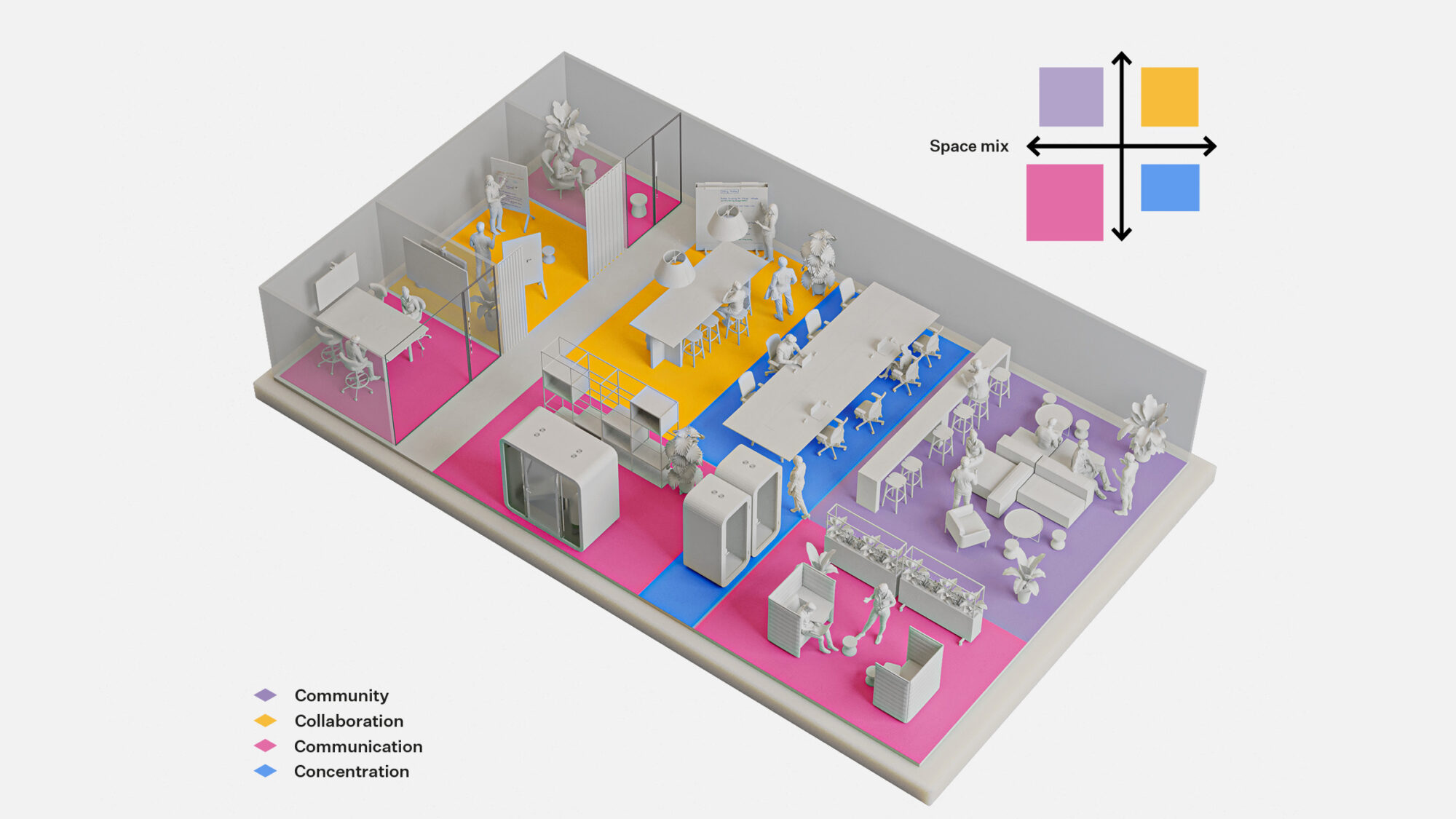
Environmental factors change our experience. In fact, they can both deter and attract us to a space. No matter how the workplace looks, people will underperform if the conditions are wrong.
To make sure spaces are suitable for everyone, think about how these components make you feel. Try to provide different combinations to meet people’s needs. Every organisation is different, so the best solutions come from diving into the culture of your firm and understanding how you work.
Inclusivity deserves a top spot in every leader’s list of priorities. The result? Empowering teams to make the organisation more successful.
Contact our Workplace Strategy team to help you create a more inclusive workspace.
Associate Director, Workplace Strategy and Transformation